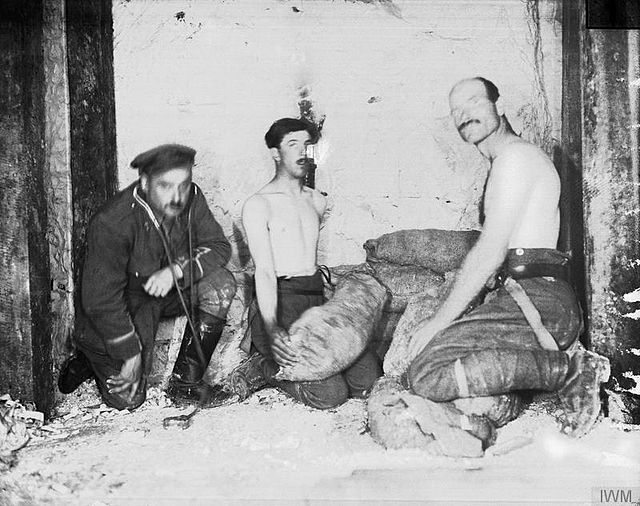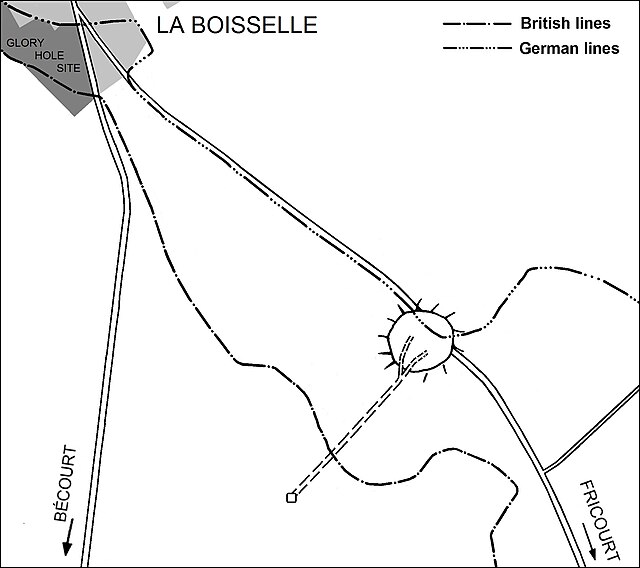Mines on the first day of the Somme
On the morning of 1 July 1916, the first day of the Battle of the Somme during World War I, underground explosive charges planted by British tunnelling units were detonated beneath the German front lines. The joint explosion of these mines ranks among the largest artificial non-nuclear explosions.
A mine gallery with timber roof support (Canada 2003)
Miners laying charges for one of the mines on the Somme, 1–13 July 1916.
Geological cross-section of the Somme battlefield
Plan of the H3 mine placed beneath the Hawthorn Ridge Redoubt
The first day on the Somme, 1 July 1916, was the beginning of the Battle of Albert (1–13 July), the name given by the British to the first two weeks of the 141 days of the Battle of the Somme in the First World War. Nine corps of the French Sixth Army and the British Fourth and Third armies attacked the German 2nd Army from Foucaucourt south of the Somme, northwards across the Somme and the Ancre to Serre and at Gommecourt, 2 mi (3.2 km) beyond, in the Third Army area. The objective of the attack was to capture the German first and second defensive positions from Serre south to the Albert–Bapaume road and the first position from the road south to Foucaucourt.
An example of a Lewis gun
60-pounder gun battery
Aerial photograph of a British gas attack from Carnoy to Montauban, shortly before the Somme offensive.
Diagram of the Lochnagar mine








